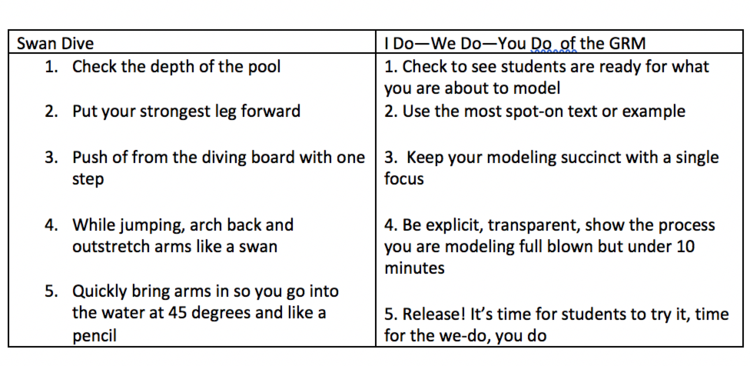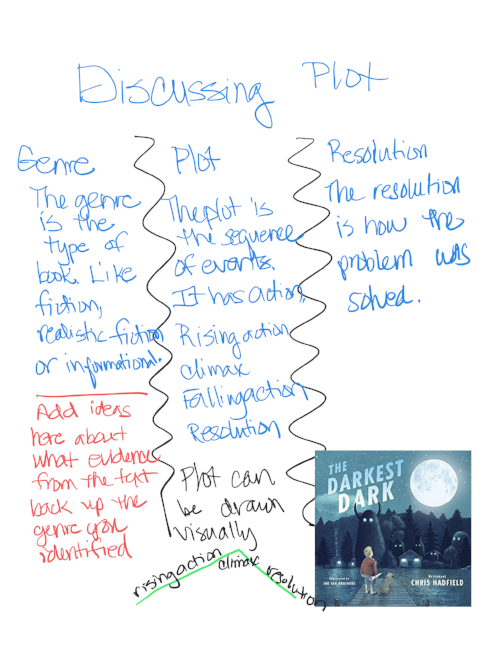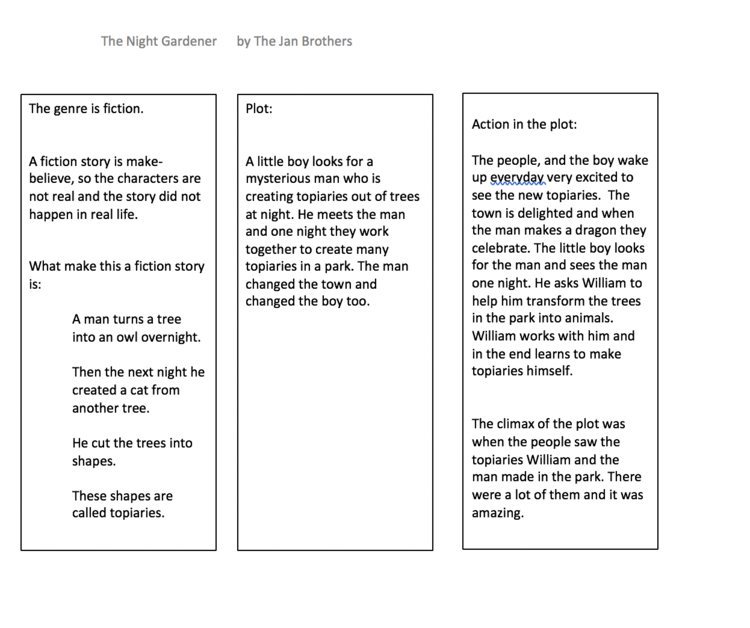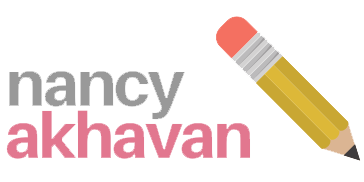
It’s summer, but we are thinking about getting the classroom ready, and those first weeks of school. What will I teach the first day? The first week? It’s so easy to get caught up in what we are going to present—when the truth is, it’s more powerful to envision what students will be doing, to imagine their motions of mind and body as they practice something new. I was musing all this while at the pool last week on one hot California day, and as I watched my daughters do swan dives over and over. I sat up and thought, wow, it’s the perfect metaphor for the execution of the I-Do phase of the gradual release all teachers ought to practice.
Check this out:

Learning from Belly Flops
Get the picture? If you show off those outstretched arms too long—ouch. Body slam, flat on the water. I confess—my past modeling and lessons were more belly flops than artful dives because I just would not release the doing of the work to the students. It’s like I’d run the whole length of that diving board with an overcharged mini-lesson and then dive, but wait too long to tuck in my arms because I was so caught up in showing them the perfect model of correctness.

Let them get into the pool! Let students dive! I’ve learned that trying to ensure they were doing it right not only steals minutes away from student practice time, the very concept of “right” is hazardous. Instead, we want to release so students can have the time to do it their way – to find what feels right for them.
We want them to have the time for thinking through the work, working on the work, and feeling successful when they have an ah-ha moment. And if you see them flailing? You coach them, help them figure it out, and do so in a way that doesn’t overtake their sense of being the doer.
6 Tips for Well-Timed Release
1. Think Through the I-Do and the You-Do. During lesson planning, prepare a mini-lesson where you will model, but spend most of your planning time on designing the student task–the authentic reading and writing students will be doing. Plan for ample time for students to do the reading and the writing, and make sure that what you model can’t be merely copied down by students. The task isn’t a mirror or a mimic—it’s something the student does with an entirely different text or writing idea.
2. Keep a timer. If you have been talking or modeling more than 10 minutes, stop, and invite the students to work on the task, or to do the doing that you have been modeling. If doing so seems too scary, give students a shorter amount of time to read and write and work on the task, and extend it as you get more familiar with your role.
3. Coach, Coach, Coach. Students will learn more and remember you as a powerful mentor if you let go of control and pour that energy into coaching during the we-do/you do instead. Be super-aware of when you are trying to have learners do a task in a particular way, or nudge them so it looks a certain way. They will be proud of what they accomplish when it looks like them—not like you.
4. Blur the lines. We often think in terms of I Do, We Do, You Do as three, pure, separate phases. Trust me, the most important thing is to release as soon as you can, but from there, trust your instincts for how to organize we do and you do, and
5. Put the We in We Do. The We do needs to be you doing with not for students. There could be different iterations of We do, maybe first you model, then they try it for a minute or two and you observe and give feedback, or maybe the We do, is a shared writing where you brainstorm what to write with students and then share the pen to write down their marvelous thinking. We do can happen in partners, or small groups. It can include partner share and peer work. The We do needs to focus squarely on the students doing the doing, but with you right there, still modeling if necessary.
Check out these ideas for an I do (the teaching chart), the We do ( a shared writing) and a You do (a sample of student work). You can see the progression of student independence in the work.

The Teaching Chart

The Shared Writing – created in class and typed out for an example in this blog.

Happy Swan Dives as you start Back to School!

